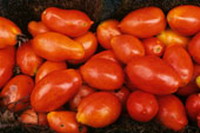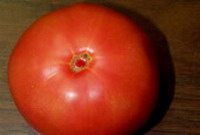
Food Safety Focus (24th Issue, July 2008) – Food Incident Highlight
Salmonella and Tomato
In early June 2008, the United States (US) Food and Drugs Administration (FDA) warned the public not to eat certain red plum, red Roma and round red varieties of raw tomatoes in the US because they might be linked to outbreak of disease caused by Salmonella Saintpaul, an uncommon type of Salmonella. It was reported that at least 1 017 cases and 203 hospitalizations were caused by this particular type of Salmonella in some tomatoes in US since mid-April. The Centre for Food Safety is closely monitoring the situation and has taken samples for analysis. The test results were all satisfactory.
Salmonella is a group of bacteria that can be found in the intestinal tract of humans and both wild and domestic animals (including poultry, pigs and pets like dogs, cats and reptiles). Generally, Salmonella is more commonly found in beef, pork, poultry, milk, eggs and their products, but produce may be contaminated during the farming processes by manure, contaminated water, wild animals or workers. By eating raw (including raw tomatoes) or under-cooked food that contains the bacteria or by consuming cooked ready-to-eat food that had been cross-contaminated with Salmonella from other foods or infected humans, food poisoning can occur. The incubation period is from 6 to 48 hours, usually about 12 to 36 hours. The symptoms, which include nausea, fever, abdominal pain, diarrhoea and sometimes vomiting, are more severe in infants and the elderly. Salmonella present in raw food can be destroyed by cooking thoroughly, but care should be taken to prevent re-contamination with Salmonella.
Consumers should follow the CFS advice in preparing tomatoes for raw consumption. Once tomatoes are contaminated with Salmonella, it can be difficult to remove all the surface bacteria by washing. Therefore, the elderly, children, pregnant women and persons with lowered immunity should be careful when choosing food, especially high risk foods such as salads (including those with raw tomatoes).
Illustrations: Tomatoes implicated in the Salmonella outbreak in the USA (Photo: US FDA) 


